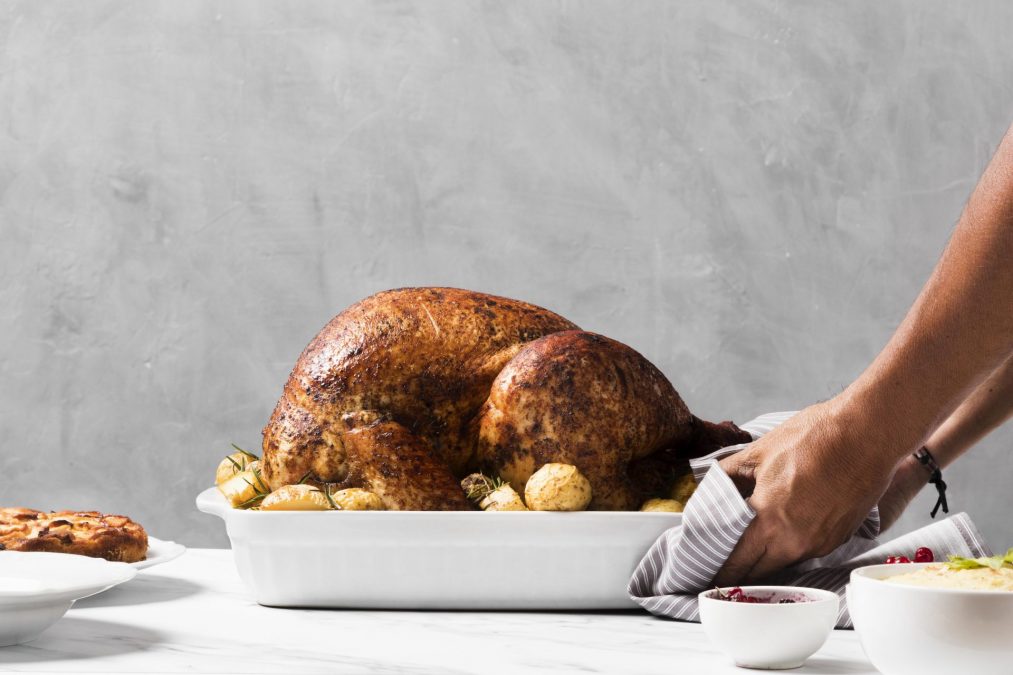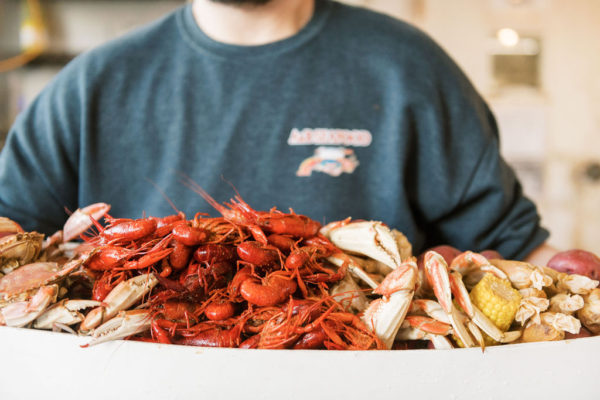
Terrebonne Ford Hosts Dog Adoption Event Nov. 29
November 23, 2021
Larose Man Arrested for Second Time in Two Weeks as Narcotics Agents Make Two Arrests
November 23, 2021The time to give thanks for all we have is here…as is the stress of preparing a meal with big expectations! Let’s hope we can all get through it without setting the turkey on fire or sending our guests away with food poisoning! If you have the honor of preparing the turkey for Thanksgiving and have more questions than answers, here’s some very helpful information!
Thawing
First, if you’re starting with a frozen turkey, you’ll have to plan ahead to give it an adequate amount of time to thaw. A rule of thumb for refrigerator thawing is five hours for every pound. For example, a 12-pound turkey should be thawed for 60 hours, or 2.5 days. If you have to thaw quicker than that, there is another option. You can fill your sink or a large pail with cold water and submerge the turkey so that it is completely covered. Then, every 30 minutes, change the water, replacing it with cold water. This method allows thawing each pound of turkey in just 30 minutes. So for that same 12-pound turkey, thawing in cold water will take just six hours. If you don’t have adequate time to thaw the turkey, you can cook it from its frozen state, but you’ll have to adjust the cooking time for at least 50 percent longer than is recommended for a fully thawed turkey.
Prepping
Be sure to remove the giblets and neck from the turkey cavities after thawing. If you wish to cook these, do so separately from the turkey. Also, for the most even cooking possible, tuck wings under the shoulders of the bird for more even cooking. Add a ½ cup of water to the bottom of the pan and cover with a lid. If your roasting pan does not have a lid, you may place a tent of heavy-duty aluminum foil over the turkey for the first 1 to 1 ½ hours. This allows for maximum heat circulation, keeps the turkey moist, and reduces oven splatter. To prevent overbrowning, foil may also be placed over the turkey after it reaches the desired color.
Stuffing
If you are planning to stuff your turkey, you’ll want to make sure you’re not packing it into the bird, but instead placing the stuffing inside so it is fluffy. Per the Food Safety and Inspection Service at the United States Department of Agriculture, “The stuffing should be moist, not dry, since the heat destroys bacteria more rapidly in a moist environment.” Once the turkey is stuffed, place it in the oven immediately. To ensure the stuffing is cooked properly, use a food thermometer to make sure the center of the stuffing reaches a safe minimum internal temperature of 165 degrees Fahrenheit.
Cooking
Always follow the cooking recommendations on the packaging the turkey came in, but as a general rule of thumb, cook the turkey at a minimum of 325 degrees Fahrenheit. Typically, a 12-pound bird will take 3 to 3.5 hours to cook. The meat thermometer is your most important tool in ensuring the meat is cooked thoroughly. A whole turkey is safe when cooked to minimum internal temperature of 165 degrees Fahrenheit. Check the internal temperature in the innermost part of the thigh and wing as well as in the thickest part of the breast. Even if you have a “pop-up” turkey, you should also ensure the internal temperature is 165 degrees Fahrenheit. For the best quality, juiciest turkey, let it stand for 20 minutes after you have removed it from the oven prior to carving it. This also allows for easier carving.
And here are some other “keep-your-days-as-sane-as-possible” tips for preparing the meal:
Prepare as much of the food as you can in advance. Look at your menu and see if there’s anything you can do the day before. For example, if mashed potatoes are on your menu, peel and quarter the potatoes, then cover them in cold water and put in the refrigerator until you are ready to boil. You can make your green bean casserole in advance and refrigerate as well. Putting together a cheese or veggie tray? Plate it up and seal with plastic wrap. Making dressing? Cut up your celery and get your spices ready to go for easy throw-ins just like they do on TV for cooking shows.
Write down a schedule. This will allow for keeping on track with what needs to be done when, but it also allows for others to help with a specific job at a specific time so that you don’t become overwhelmed with seven people asking “How can I help?”
Breathe and remember to laugh. Thanksgiving is a time for thanks and togetherness. If the turkey burns, the dressing is undercooked and the pumpkin pie spills onto your oven, certainly you have a box of macaroni and cheese sitting around, right?
Source:
Turkey Time! Tips for a safe and sane feast by Alice Henneman, MS, RD, from the University of Nebraska-Lincoln. Content reposted with permission from www.bestfoodfacts.org.








